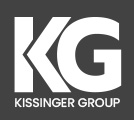Beyond Copilot: How CHROs Can Harness AI Without Losing Human Insights

A strategic guide for Chief Human Resources Officers navigating Copilot adoption.
1. What Copilot Actually Does
In simple terms:
Copilot is an embedded AI assistant across Microsoft 365 apps. It helps with:
Drafting and summarizing documents, emails, and meeting notes.
Analyzing data in Excel (creating formulas, dashboards, scenario models).
Generating PowerPoint slides from outlines or documents.
Automating repetitive admin work (scheduling, follow-ups, task tracking).
Bottom line: Copilot accelerates execution—it does not replace judgment.
2. Where Copilot Falls Short
While Copilot saves time, it operates best inside structured workflows. CHROs leading large, ambiguous transformations will encounter key limitations:
| Area | Limitation | Example Impact |
|---|---|---|
| Strategic Context | Lacks understanding of organizational nuance, politics, or culture. | Suggests a change plan that ignores power dynamics. |
| Data Access & Privacy | Only as smart as your Microsoft environment; limited to licensed data. | Misses insights in HRIS or engagement tools outside 365. |
| Change Management Insight | Automates tasks, but doesn’t manage resistance or build buy-in. | Employees may adopt the tool but reject the change it supports. |
| Decision Quality | Generates options, not probabilities or trade-off analysis. | Lacks structured decision frameworks like Kissinger’s 3C process. |
| Human Empathy | Cannot sense morale or emotional fatigue. | May recommend efficiency measures that cause burnout. |
3. Tools to Close the Gaps
To create a truly AI-enabled HR function, Copilot should be part of a broader transformation system.
Here’s what to pair it with—drawn from Kissinger’s Change Driver Manual and StrategicSpark frameworks:
| Capability Gap | Complementary Tool | Purpose |
|---|---|---|
| Organizational Context | Transformation Playbook | Defines how people, culture, and structure intersect with AI rollout. |
| Decision-Making Rigor | 3C Decisioning Framework | Ensures Copilot-informed decisions align with enterprise outcomes (Conclusions, Conditions, Chances). |
| Cultural Alignment | Culture Assessment Toolkit | Captures employee sentiment before automation reshapes roles. |
| Change Fatigue Monitoring | Change Saturation Dashboard | Tracks workloads and program overlap to prevent burnout. |
| Human Communication | Internal Branding & Messaging Framework | Markets the AI initiative like a brand campaign—clear narrative, emotional appeal, and value proposition. |
| Governance & Metrics | Enterprise Control Tower | Coordinates initiatives to prevent tool chaos and aligns tech with strategy. |
4. What This Means for CHROs
Copilot is not your strategy—it’s your accelerator.
To lead responsibly:
Design before you deploy. Use enterprise frameworks (org design, workforce architecture, change readiness).
Brand your AI program. Borrow consumer marketing techniques (narrative, emotional hooks, and ambassador roles).
Measure human impact. Use change-fatigue and culture diagnostics as often as you use dashboards.
Upskill your team. Blend technical fluency with decision science, empathy, and communication mastery.
Lead by example. Model responsible use—Copilot drafts the slide, but you deliver the story.
5. Quick Reference
| For This Outcome | Start Here |
|---|---|
| Build an AI-ready workforce | Designing Your Transformation Team (Change Driver Manual, Ch. 2) |
| Manage resistance and fatigue | Leading Change with Emotional Intelligence (Ch. 8) + Battling Organizational Fatigue (Ch. 9) |
| Align tech with business goals | Using Innovation to Enable Transformation (Ch. 5) |
| Strengthen decision quality | The 3C Decisioning Process (Ch. 6) |
| Measure long-term adoption | You’ve Successfully Implemented Change! Now What? (Ch. 10) |
6. Copilot Governance Checklist
Define purpose and ROI for HR’s Copilot rollout
Map stakeholders and decision owners
Conduct culture and readiness assessment
Establish data governance and access protocols
Identify quick wins (e.g., automating offer letters, summarizing surveys)
Build change champion network
Monitor adoption and fatigue quarterly
Copilot is only as smart as the data it draws from.
Without accurate, structured, and accessible information across your HR systems, workflows, and communication channels, Copilot can’t deliver meaningful insights or automation. To truly unlock its value, you need a connected ecosystem: clean data, well-designed processes, and tools that translate HR strategy into usable context.
If you want to make Copilot more than a productivity tool—if you want it to become a real strategic advantage—our team can help. We build the systems, governance models, and frameworks that make AI work for your organization, not just within it.
Let’s design the foundation that makes your Copilot smarter.
Click here to get started.
